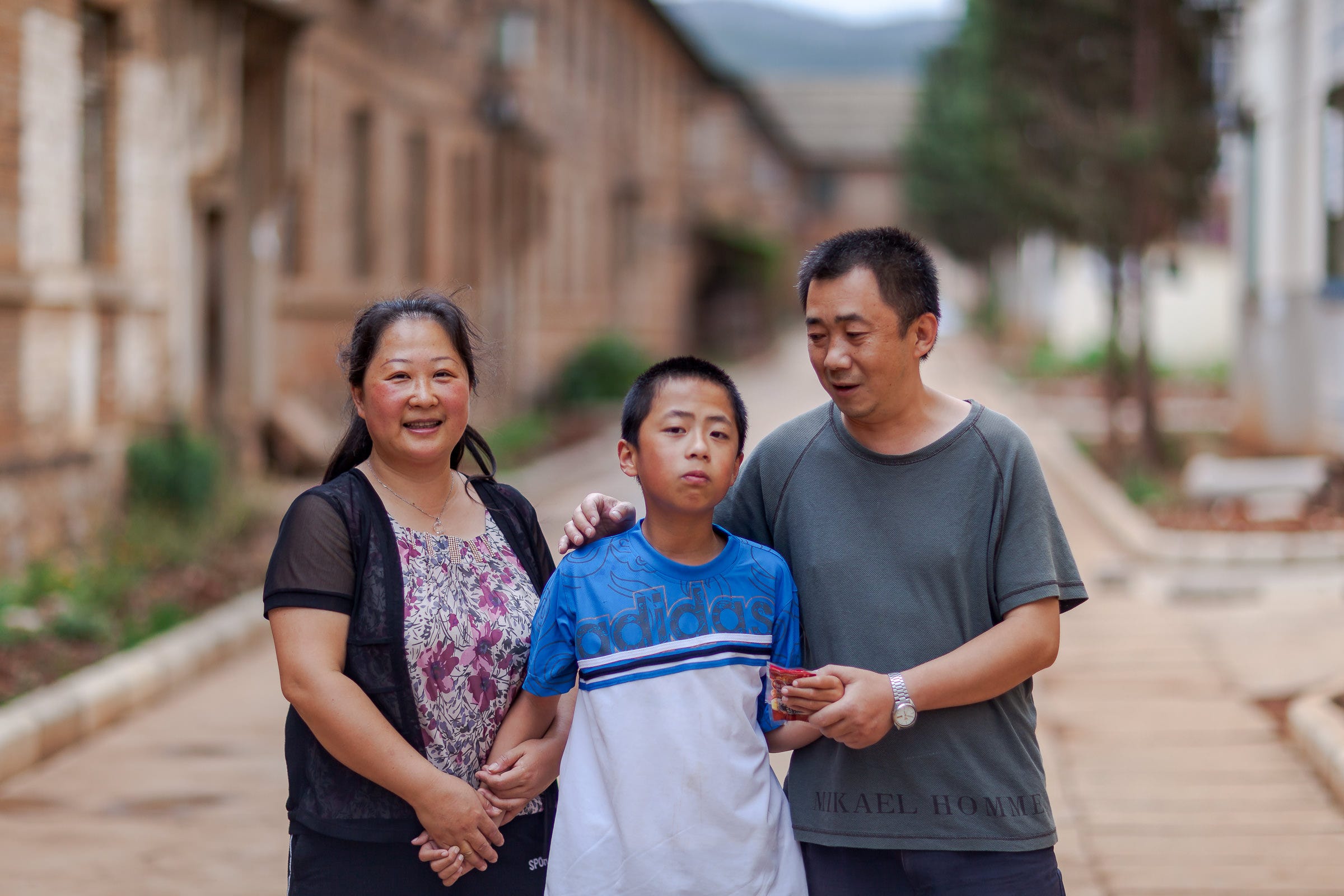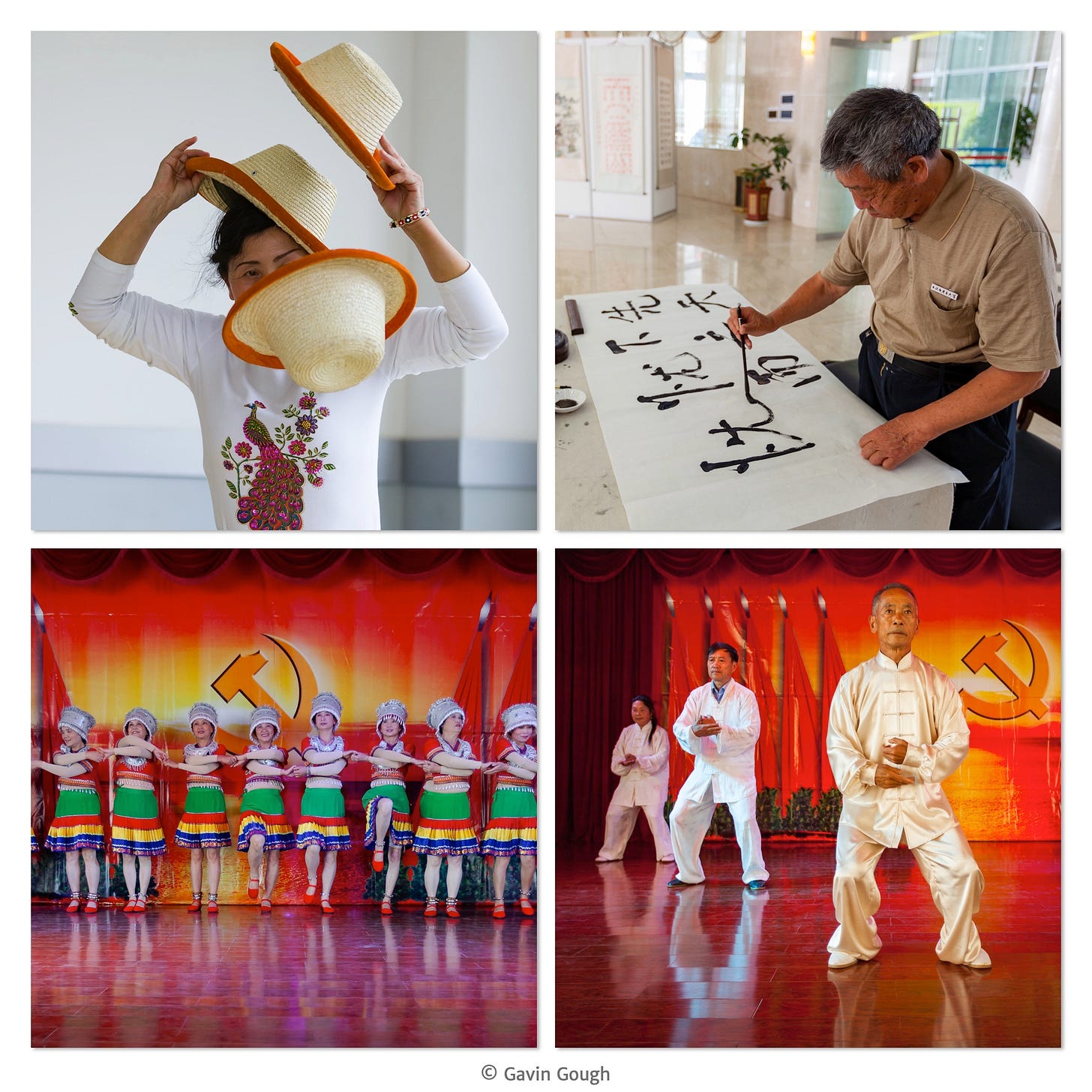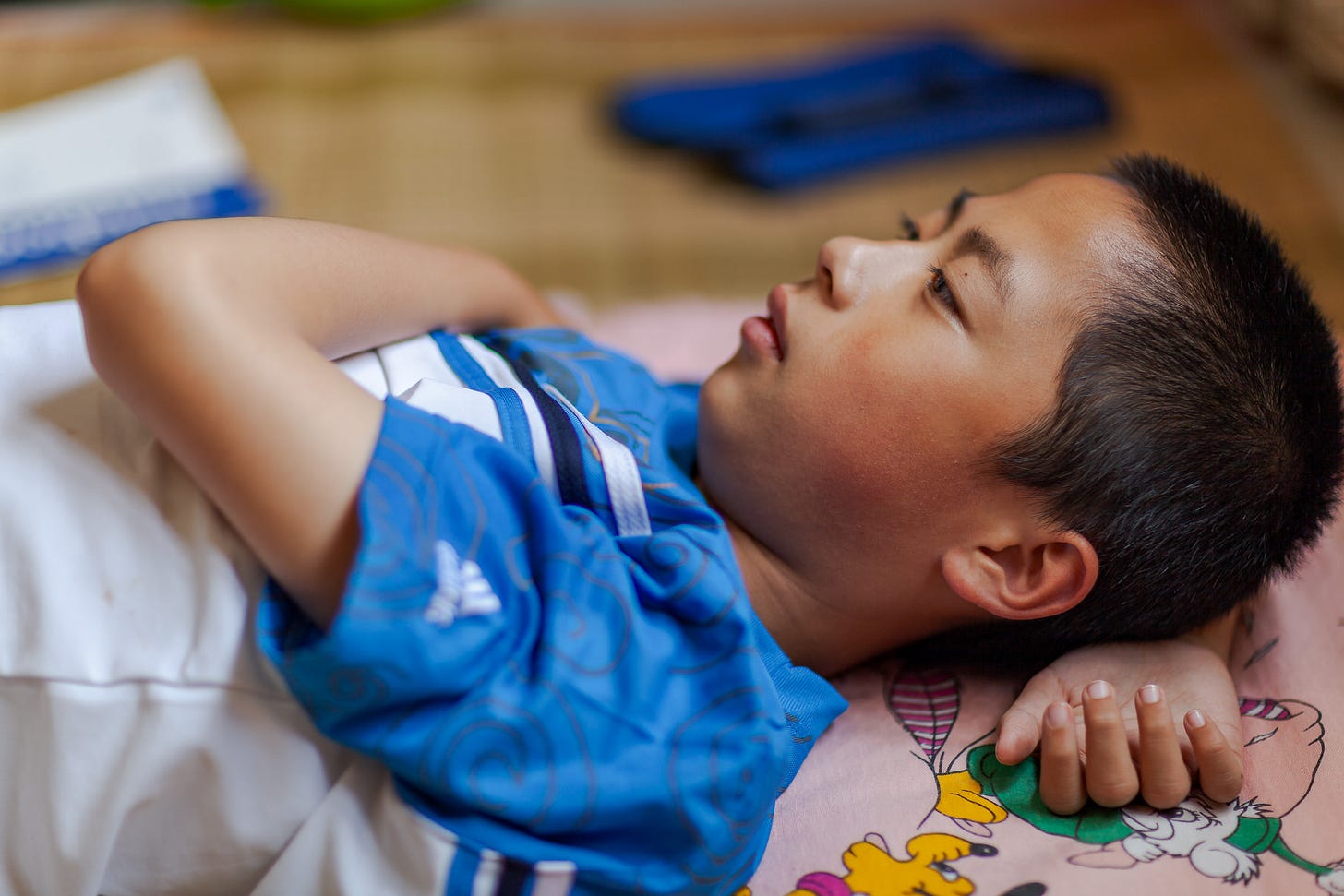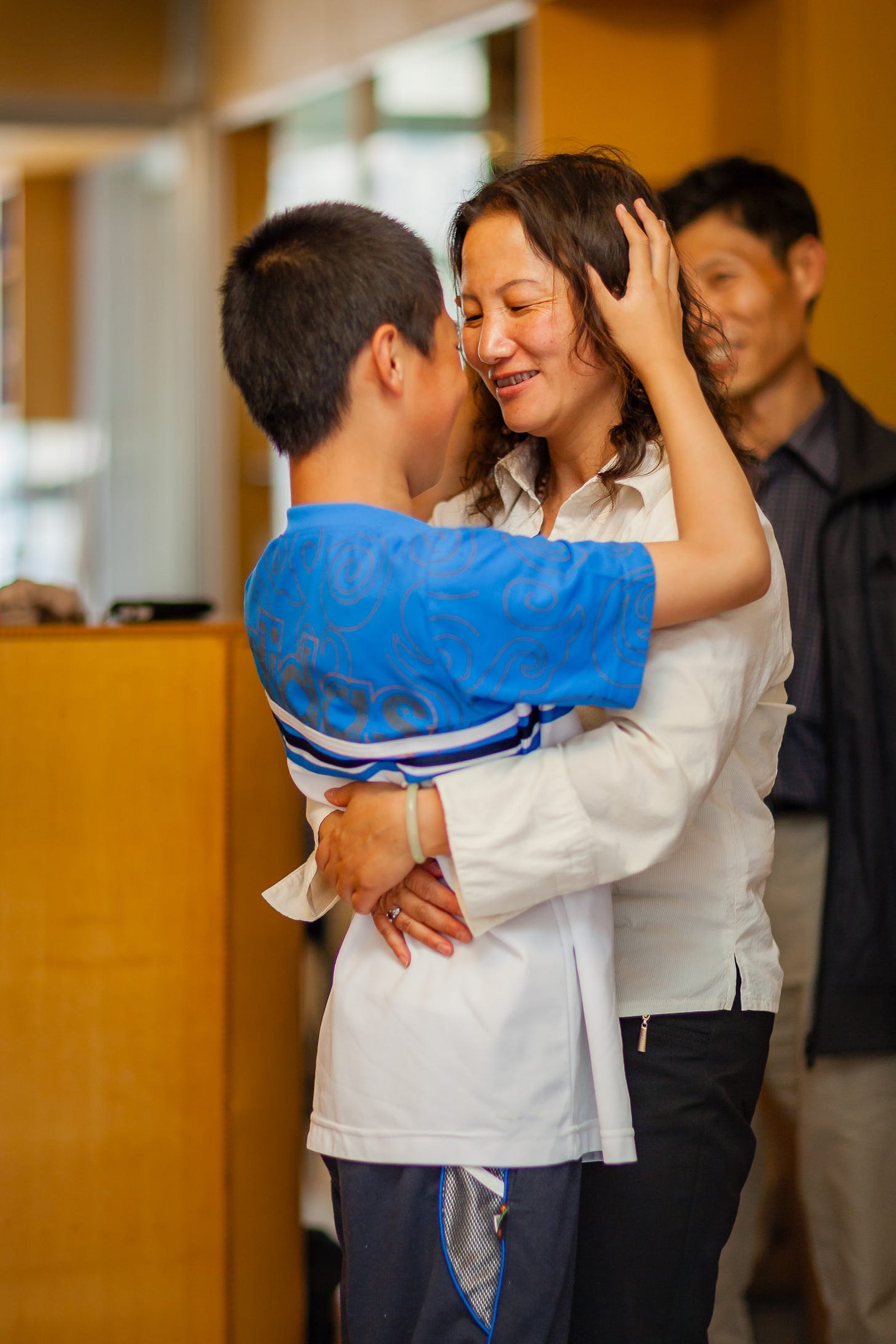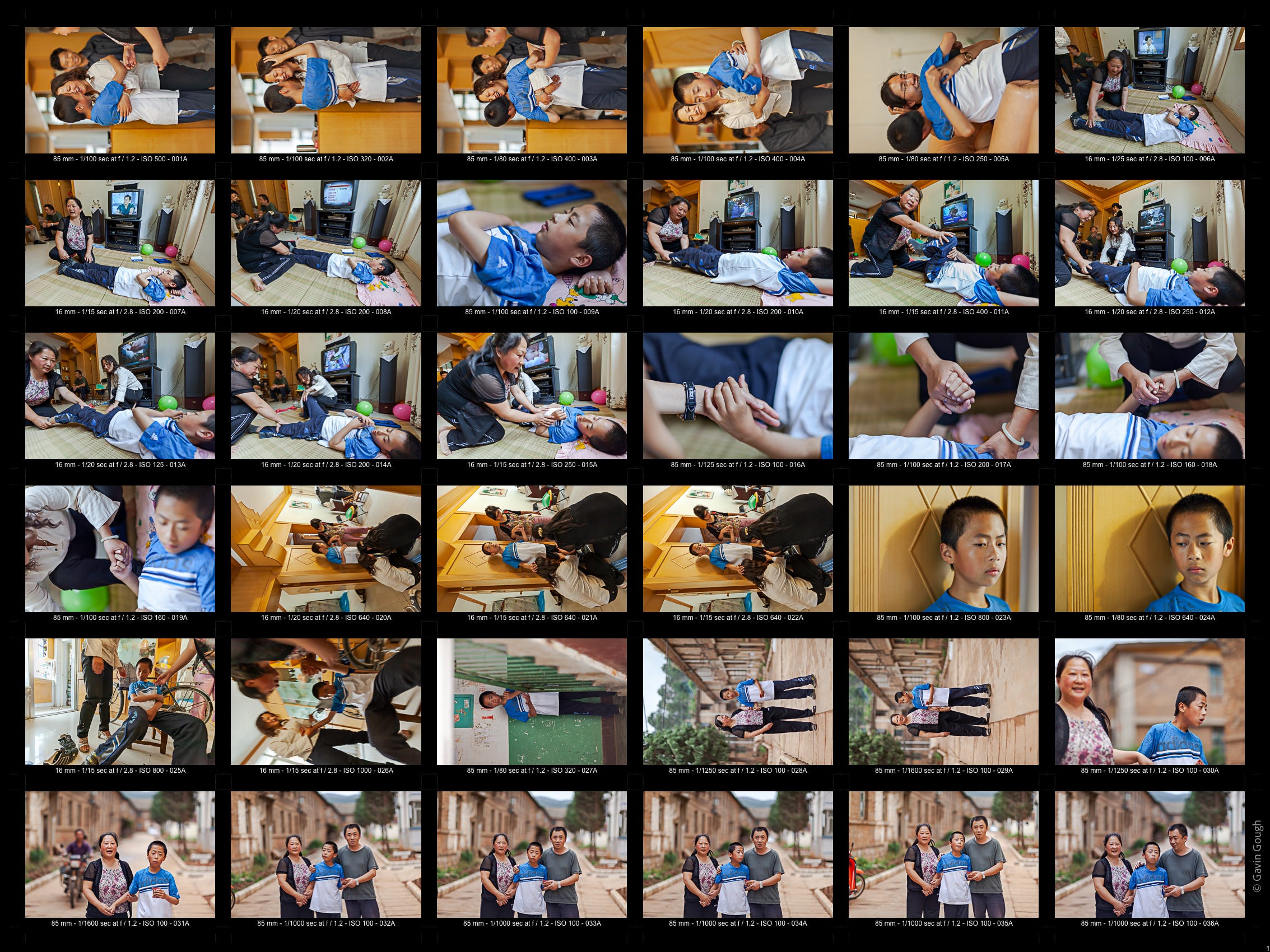Beyond the Frame 2/
On assignment for UN ESCAP in China
In Friday’s newsletters I review a single image from an assignment. I describe the job, look at what influenced my camera gear choices, editing, processing, and reflect on lessons learned.
Client: United Nations ESCAP
Location: Xishan, Kunming, Yunnan Province, China
The Brief:
“The Social Development Division requires high quality images of activities that can be used to promote good practices in ESCAP’s outreach materials. The documentation will consist of powerful and bold images that are both empowering but which also convey the problematic issues of development, with particular focus on our work to promote the rights of vulnerable social groups such as the poor, persons with disabilities, older persons, youth, people affected by HIV and AIDS, women, and migrant groups.”
The Contract
That’s an extract from the official ‘Brief’, which appears in the contract between photographer and client. It provides a vital frame of reference and sets clear expectations. The full list of deliverables is longer, contains a lot more detail and will have been fine-tuned in emails, meetings and phone calls over many weeks, sometimes months.
I actually quite like the process of agreeing the terms of an assignment — although I may be in a very small minority — because it provides an opportunity for the photographer and client to set the tone for a collaborative endeavour. It can be time-consuming but if it disarms potential traps lying in the road ahead, it’s time well spent.
This assignment for the UN in China lasted one week. I’ll skip over the interminable bureaucracy and lengthy visa process and take you to the day I met with members of the Xishan District Disabled Persons’ Federation.
I know, I know, you probably want to read about shutter speeds and hyperfocal distances 🙄 but as my stated aim is to share stories from the life of a professional photographer, you should know that relatively little time is actually spent with a camera in hand. There’s a lot of “business management”. On this occasion, for example, we needed a specific and additional contract, just for the day.
The Extra Contract
I’ve highlighted some interesting points:
Negotiations were “friendly” — I didn’t write it but now ask for that adjective to be included in all my contracts 😁.
It would be my responsibility to obtain signed Release forms — in English and Chinese. Something to prepare in advance. No Release = no photographs!
I would be leaving copies of all my images at the end of the day — N.B. Add spare USB memory sticks to packing list!
Copyright remains with the photographer. This is essential. No ifs, no buts. Copyright exists to identify the creator of the work. If you’re the photographer, that’s you. If you’re tempted to give away your copyright to land a big client, don’t. Ever. A Rights-Managed licence is more than sufficient to give a client all the usage rights they might ever need. Relinquishing your copyright undermines the rights of all photographers. I’ll be returning to this thorny issue in future editions.
Logistics
I met with the client representative in a cafe the evening before this job. She explained that arrangements had been made to visit seven disabled clients in their homes.
The homes were not close to one other. We estimated 45–60 minutes transfer time between each location. I was hoping for an hour with each client so it looked like a 14-hour day. I checked sunrise and sunset times and suggested an early start. I really wanted to avoid having to work with artificial light if possible.
I asked who would be joining us. The super-friendly client representative took me through a list of people, which was longer than I’d expected.
“OK, this is who’s coming tomorrow: You.”
“Good start. I think I should be there.”
We both laughed. I am a riot.
She continued.
“Me.”
“Great.”
“Two staff from CMB.”
“Two?”
“They work together.”
“OK, fine.”
“A representative from the Disabled Person’s Federation.”
“I see.”
“The Social Worker.”
“Hang on, I’ve lost count. Is that six people?”
“Yep. Our driver of course.”
“Sure.”
“The driver’s friend.”
“The driver’s friend?”
“Well, we might need two cars.”
“Might?”
“The Mayor.”
“The what now?”
“And the Mayor’s wife.”
It’s not unusual for assignments like this to turn into an “Event”. This is particularly true in China where extending generous hospitality to a visitor is highly important and I’ve had more assignment days with a local dignitary present than without.
Once, on a different job, where I’d expected to quietly and unobtrusively photograph classes at a University, I was greeted on the steps by the local Mayor, a 16-piece band and local news reporters. Inside, rows of trestle tables had been set up to show student work, which I was invited to appreciate. There was a demonstration of traditional calligraphy, an exercise class and a lady who juggled three hats followed by a concert of music and dance. Events concluded with a formal presentation and an invitation to join the Mayoral party for dinner… squeezing in some photography was a challenge — but I’d had a jolly time and made a lot of new friends.
The Assignment
At first light the following day, one sleepy photographer and nine enthusiastic new friends squashed into two small cars and set off for what felt like a fun staff outing.
Our appointment with 12 year-old Feng Yaoxu and his family would be our final home visit of the day. By the time our merry band reached his house we’d visited six other homes and drunk many, many gallons of tea.
Tea first
I knew we’d only have one hour. I also knew that the family would want to show hospitality to their guests. More tea! Despite my desire to get on with the job, it’s never appropriate to skip the formalities. Plus, there’s no such thing as too much tea. Yes, I was there to make photographs for my client but an essential part of that process is taking the time to understand the family’s situation and circumstances.
Feng was 12 years old, diagnosed with Cerebral Palsy and Autism, he had no language skills. His parents had been warned that he would never walk.
Although Feng was the name in the “Subject” column of our Shot List, he was not the subject to be depicted. That subject is unspecified and invisible. It’s not a person or a landscape or a building, it’s a concept, an idea or an emotion. I believe that it’s the photographer’s job to identify what the subject really is.
Through an interpreter, Feng’s parents explained how the Disabled Persons’ Federation, supported by ESCAP, had recruited a Social Worker trained in physiotherapy. In turn, she had taught Feng’s parents a series of daily exercises that would help strengthen Feng’s muscles and joints.
The “Real” subject
This was the crucial ingredient in the assignment. All the bureaucracy, the diplomacy, the travel and the gallons of tea were just paraphernalia surrounding the one and only reason for us all to be there; Feng’s exercises. And the concepts that I needed to try to convey in the remaining 20 minutes included things like “nurturing”, “caring”, “support”, “family”, “devotion”, “encouragement”…
My next question was more practical. How to give myself the best chance of conveying those abstract ideas in a very small living space within 20 minutes? (And how to diplomatically ask the Mayor and his wife if they would move out of the light?)
Exercises
I asked Feng’s mother if she and Feng would demonstrate some of his exercises. Her face lit up and she beamed a wide smile, nodding enthusiastically. Clearly, this simple, everyday act was something she was rightly proud of. The exercises had, after all, given her son the ability to stand and walk.
Whilst Feng’s mother laid a mat in front of the television, I reached into my camera bag, put an 18mm f/1.2 lens on one camera body and a 16–35mm f/2.8 lens on a second body.
Having two cameras with different focal lengths is enormously useful in almost every situation but especially here. In the small space available, I would use the 16mm end of the wide-angle to show Feng doing his exercises in the context of the family home and have the 85mm ready for closer portraits and, hopefully, to catch interactions between people.
I set up two cameras with very similar settings so switching from one to another doesn’t slow me down. Each camera works in virtually identical ways and muscle memory allows me to adjust settings without looking at the cameras.
As Feng was helped to stand by the Social Worker, who he clearly knew very well, he placed his hands on her face and began to laugh. It was a lovely, tender, affectionate interaction and whilst I did manage to capture that fleeting moment with an 85mm lens, it’s not the best photograph. One of our drivers is standing behind them, there are too many distracting vertical lines in the background, I wish I’d caught Feng’s expression rather than the Social Worker’s…
However, it is what it is. I don’t use Photoshop to remove elements, I don’t generally like asking people to pose. It’s an imperfect photograph of a perfect moment.
Perspective
The easiest approach would have been for me to sit or stand, looking down to the floor where Feng’s mother was manipulating Feng’s legs as they began his daily exercise routine. However, I really wanted to show things from Feng’s perspective, if possible. Sitting on the floor prompted urgent offers of a seat for the visitor but I managed to reassure my hosts that I preferred that viewpoint and was perfectly happy at floor level.
I think that was the right choice. I was able to show Feng’s face and his mother’s attentive expression. I switched cameras for close-ups of Feng’s hand in his mother’s hand. It’s a little clichéd, I admit, but I can live with that.
After ten minutes, the exercise demonstration had finished. I wanted to find another perspective in different surroundings. I asked if Feng would like to go for a short walk outside.
With a little more space, I was able to conclude our day with a few quick photos of Feng with his loving parents against the backdrop of their neighbourhood homes. The last photo of the day shows Feng standing in the street, his mother’s reassuring hands on his, Feng’s father’s attention directed at his son.
This frame was made 18 minutes after the first frame. It’s not an award-winning photograph and there’s nothing particularly outstanding in the final image. Nevertheless, it remains one of my favourite images from that day because it reminds me of the love and devotion that Feng’s parents and their supportive team of Social Workers show to him every day.
Processing
I’ll be looking at editing and processing in greater depth in future editions.
Processing this image was really straightforward. I use Lightroom pretty much exclusively and as I never add or remove elements my processing is limited to basic lens corrections, exposure and white balance adjustment and… hmm… that’s mostly it.
I have a series of presets, which allow me to quickly select some basic adjustments. I’ll be sharing the settings behind these in future editions and will make them available to download.
Client Feedback!
The client was delighted. The images were used widely. My invoice was paid! And this message from the local China Programme Officer warmed my heart:
“Thank you for the care and love you showed persons with disabilities. We really enjoyed working with you as you have captured the most beautiful moments in life. So inspiring!” — Yanyun Xie
What did I learn?
If I could return to that assignment and photograph it again, I would have moved my 85mm lens away from f/1.2 occasionally. The portrait of Feng and his parents in the street might be better without such a narrow depth-of-field. I’m conscious that I can get too hung up on that very wide aperture. I try to remember to move to f/2.8 or f/4 occasionally.
A question for you
If there are specific aspects of assignment work that you would like me to share, please let me know in the subscribers’ chat.


